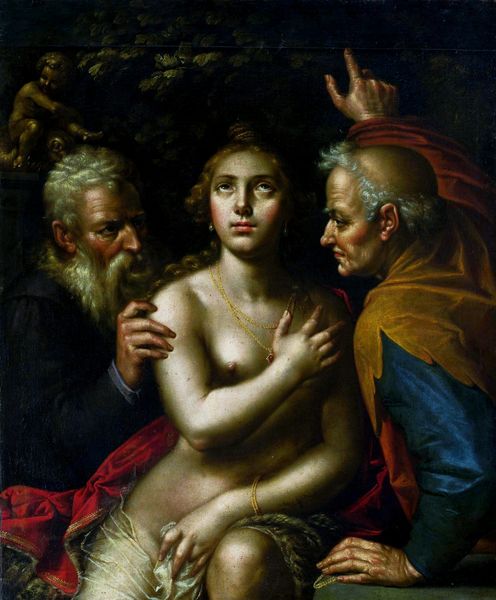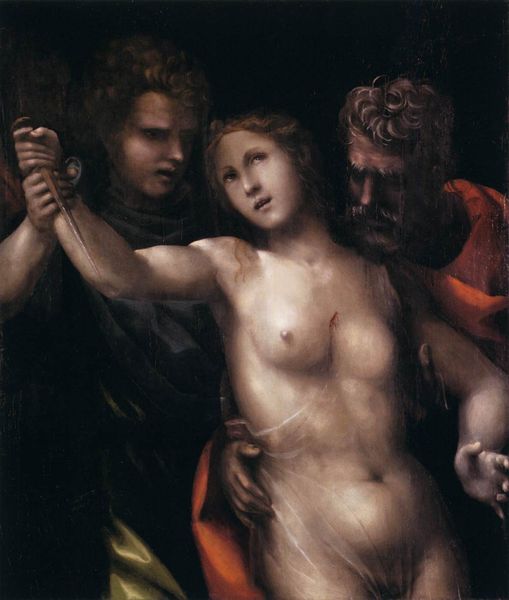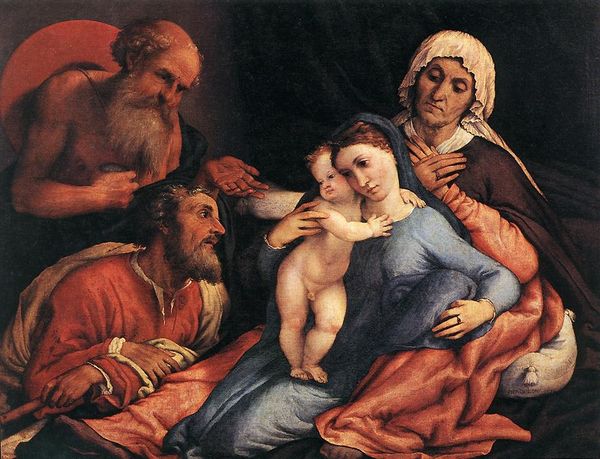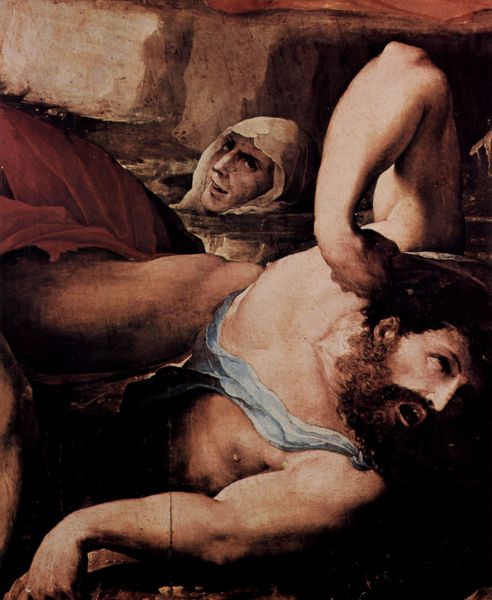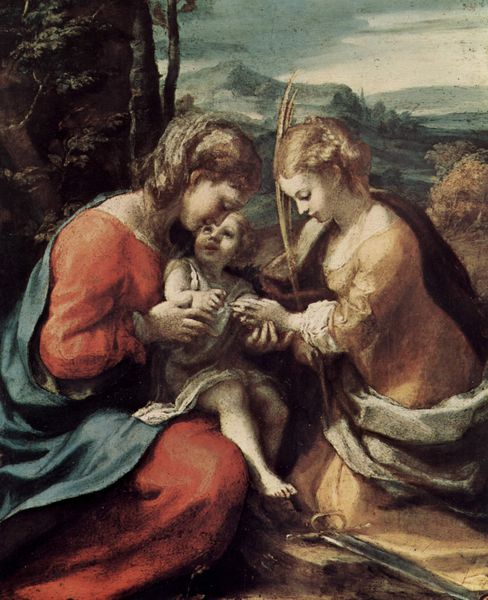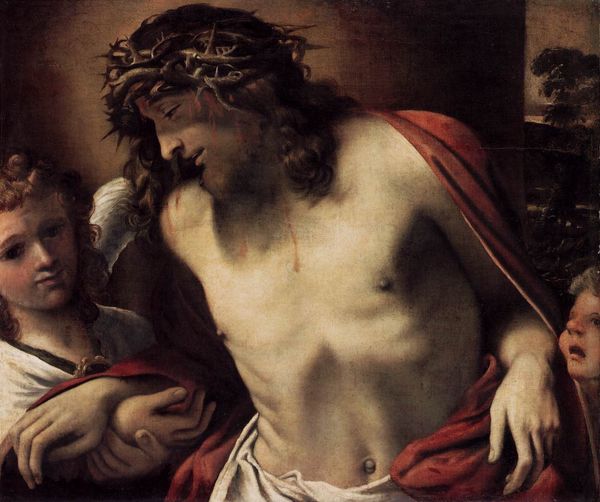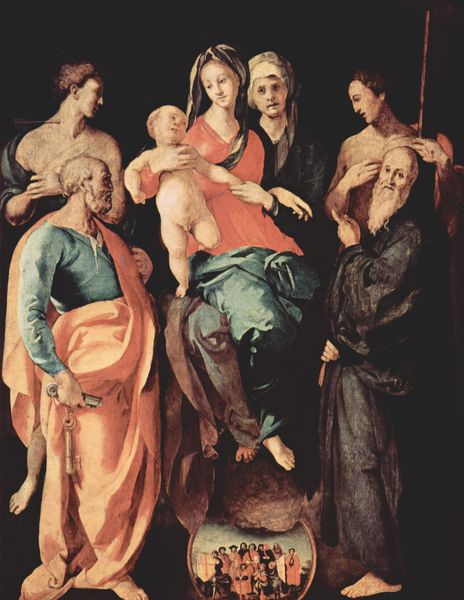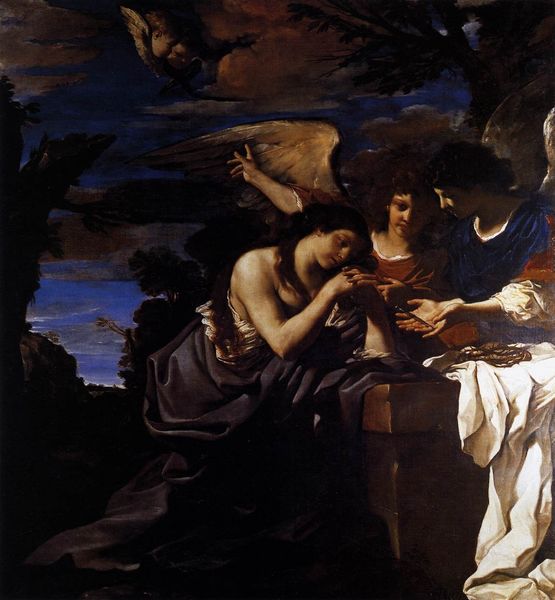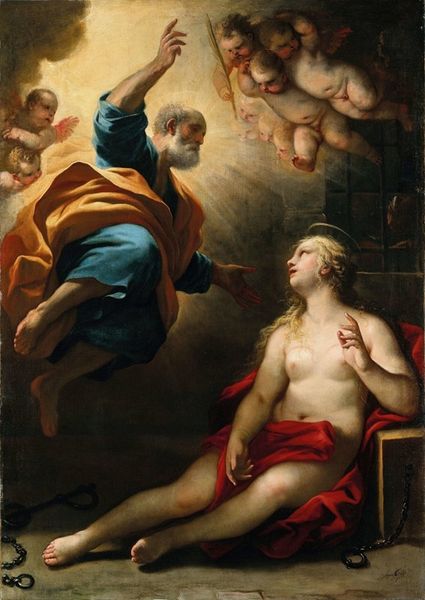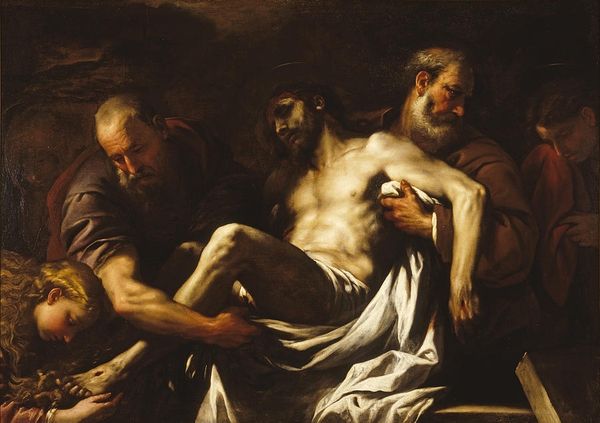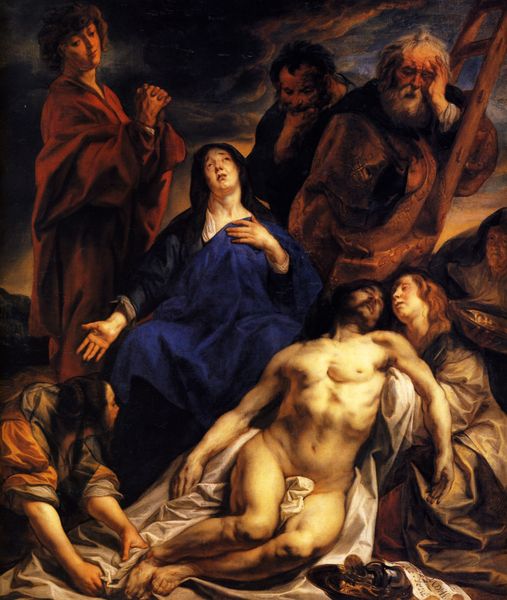
painting, oil-paint
#
allegory
#
narrative-art
#
baroque
#
painting
#
oil-paint
#
perspective
#
christianity
#
mythology
#
history-painting
#
nude
Dimensions: 118 x 113 cm
Copyright: Public domain
Curator: Look here; this is Guido Reni’s rendition of Susanna and the Elders. He completed the oil painting in 1620. Editor: What a striking composition! The figures seem caught in a theatrical moment. The heavy contrast—the chiaroscuro, really emphasizes the dramatic tension, no? Curator: Exactly. The artist employed a classical technique of contrasting light and shadow. It accentuates Susanna's luminous skin against the encroaching darkness embodies her precarious situation. Consider her gaze: fear. Editor: The power dynamic is unmistakable, underscored by the whispers and the conspiratorial gesture from one of the elders. It evokes questions of consent and the historical vulnerability of women. Are we seeing power and the abuse of authority played out in 17th century Italy? Curator: Reni certainly was tapping into those themes of vulnerability and virtue, but perhaps with an awareness to perspective. The flowing drapery, especially, offers itself as compositional relief, allowing the audience’s eyes a way into understanding this tale. Editor: True, but is it too much to assume Reni created this work from the singular male gaze, reflecting how female bodies have been historically viewed and judged by patriarchal societies? How might his patrons have interpreted this painting? What messages were reinforced about female sexuality and moral virtue at the time? Curator: Your historical read is valid, of course, and these paintings operated within complex social codes. As to the elders’ faces and gesticulations, consider the way that Reni depicts their wrinkles and sagging skin, the artist might well use their outward ugliness to reinforce the innocence and moral superiority of Susanna, highlighting the contrast between good and evil. Editor: In any case, Guido Reni captured a moment loaded with socio-political commentary. His mastery certainly created a visual story, even a complex argument. Curator: Precisely. And by using Baroque’s drama, Reni immortalized the scene with unsettling beauty.
Comments
No comments
Be the first to comment and join the conversation on the ultimate creative platform.
